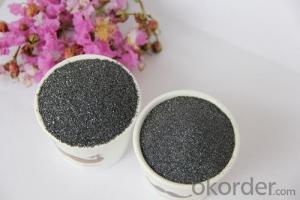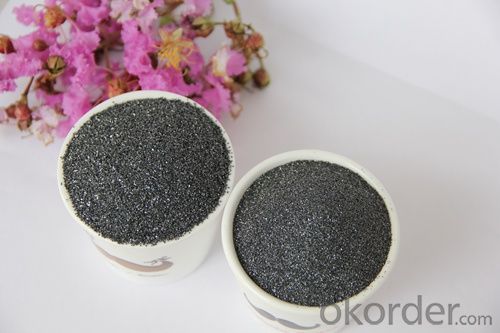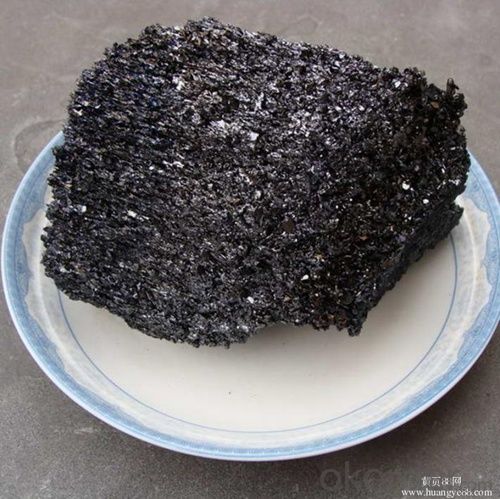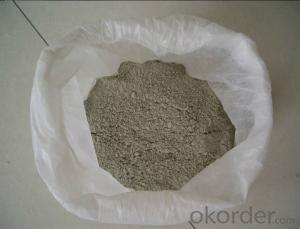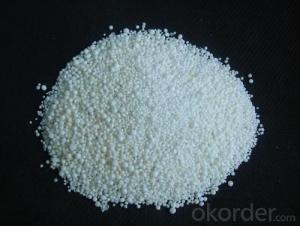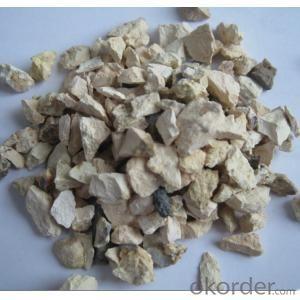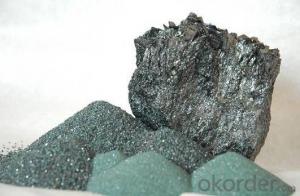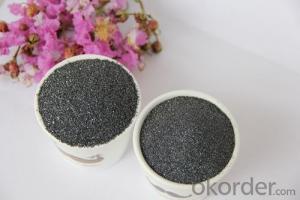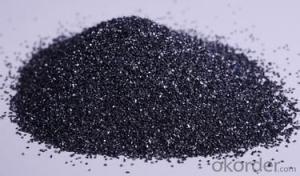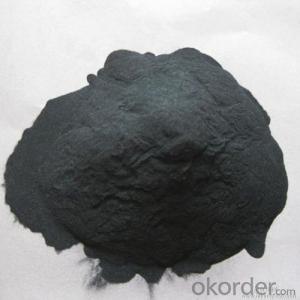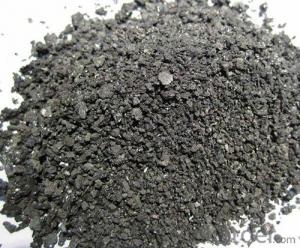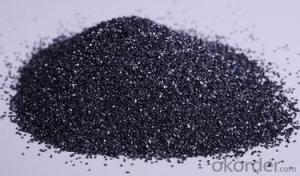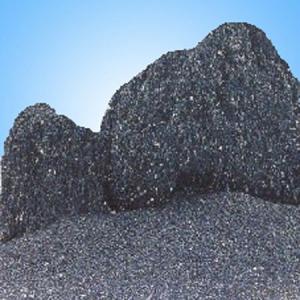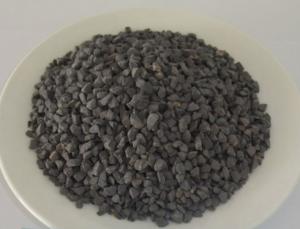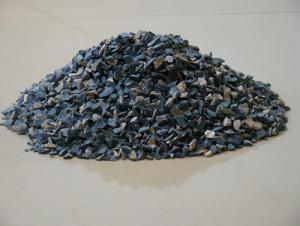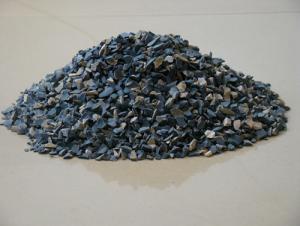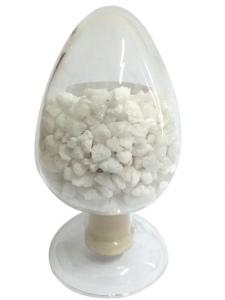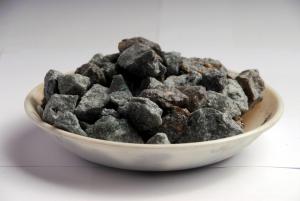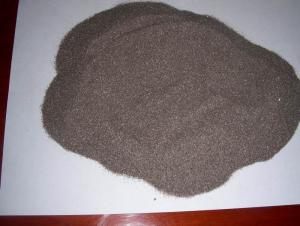Raw Materials for Refractory:Silicon Nitride Si3N4 Bonded Silicon Carbide SiC Protection Tube
- Loading Port:
- China main port
- Payment Terms:
- TT OR LC
- Min Order Qty:
- 25 m.t.
- Supply Capability:
- 2000 m.t./month
OKorder Service Pledge
OKorder Financial Service
You Might Also Like
Product Description
Silicon Nitride Si3N4 bonded Silicon Carbide SiC protection tube
Si3N4 bonded SiC ceramic refractory material, is mixed with high pure SIC fine powder and Silicon powder, after slip casting course, reaction sintered under 1400~1500°C. During the sintering course, filling the high pure Nitrogen into the furnace, then the silicon will react with Nitrogen and generate Si3N4,So Si3N4 bonded SiC material is composed of silicon nitride (23%) and silicon carbide(75%) as main raw material,mixed with organic material,and shaped by mixture, extrusion or pouring,then made after drying and nitrogenization.
Si3N4 bonded SiC as a new type refractory material,is used widely.The applying temperature is 1400 C.It has better thermal stability,thermal shock,which is better than plain refractory material and recrystallized SiC.It also has antioxidation,high corrosion resistant,wear-resistantance,high bending strength.It can resist corrosion and scouring,be no polluted and fast heat conduction in molten metal such as AL,Pb,Zn,Cu ect.
Please check below specification:
The diameter of Si3N4 bonded SiC thermocouple protection tube is Φ12-80mm,length is 1600 mm.It can be usded in high temperature kiln furnace and all kinds of atmosphere.It also can be directly used in all kinds of melted liquid.
Liquid tube,heating sheath,protection tube:used in aluminum liquid and glass liquid.It has good thermal conductivity,corrosion resistance,compression resistance,long lif ect.
Roller tube:used in brickkiln furnace on the ground,diameter Φ30-50mm,length within 1600mm,high temperature resistance,no deformation,high strength
4. Kiln furniture: used in tunnel kiln,shuttle kiln, down draught kiln,with good carrying capacity.It is ideal kiln furniture for increasing output of kiln furnace and make good use of space of kiln furnace.
5. Sagger:used for firing high grade refractory material,rare metal,powder metallurgy,electronic components and various loose material.Shape can be canister and rectangle.
6. Various refractory piece:with impact resistance,high temperature resistance,wear-resistance, good thermal shock resistance ect.Suitable for heat exchanger, cold air pipe, burner nozzle,crucible.
It can not only gain energy-saving effect,but also can keep product from pollution, and long life and convenient operation if you choose Si3N4 bonded SiC.
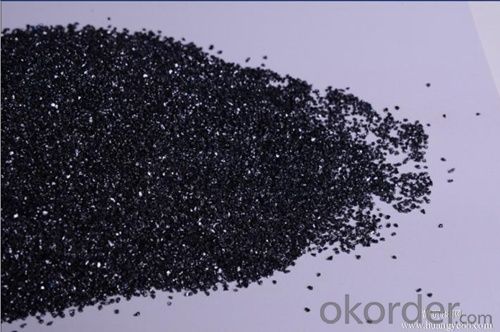
The physical and chemical performance of Si3N4 bonded SiC :
Item | Index |
Compressive strength Mpa | > 120 |
Bending strength Mpa | > 40 |
Vol. density g/cm³ | 2.4 |
Porosity % | 20 |
Thermal conductivity (1200 °C) W/M °C | 15 |
Thermal shock 1000°C-20°C | > 20 times |
Resistivity | 104 |
Moh's hardness | > 9 |
- Q: Which company needs the new refractories?
- The power plants are mainly used in steel plant, lime kiln, coking plants, boilers, etc. I will try my best to answer what I can. There are too many glassworks. You can tell me more anout what you need. As long as there is a large kiln business, the refractories and aluminum manufacturer are needed.
- Q: How to divide the fire resistant level of EVB?
- Inorganic materials: Level A incombustible material is mainly divided into three levels, which attributed to two types of materials! Inorganic materials: Rock wool, foam cement, vitrified micro bead, foam glass organic: Eps xps polyurethane phenolic aldehyde, polystyrene particles are divided into two manufacturing techniques including field fabrication and pre-production polyurethane - now sprayed, precast slab eps, xps, phenol - now posted, precast slab (composite board)
- Q: Does anyone know what kind of light fireproof materials are there?
- 二, 1, Gypsum plaster board With the building plaster as main raw material, gypsum plaster board is a kind of processed plate made by a special board for protective with an addition of additives and fibers as board core. Gypsum plaster board is characterized by light weight, sound insulation, heat insulation, strong processing performance and simple construction method. 2, Gypsum block Gypsum block is a kind of lightweight building gypsum product which is mainly made of building gypsum, and by adding water, stirring, casting and drying. During the process, , the fiber reinforced materials or light aggregates are allowed in, and the foaming agent can also be added. It has many advantages, such as sound insulation and fire prevention, convenient construction and so on. It is a kind of new and healthy wall material which produces low carbon, enhances environmental protection, and caters to the the times. 3, Fly ash brick is a new type of wall material, and bulk density is one of the main technical indexes. The weight of bulk density can be controlled according to the need of construction and adjustment of technical formula. The dry bulk density of the fly ash brick is about 1540 to 1640 kg / m 3, slightly lighter than the clay brick (1601800 kg /m 3). The flexural and compressive strength of fly ash brick is mainly determined by the production process, the formula and the hydrothermal synthesis reaction mode as well as the need of construction. According to the standards of architectural material industry (JC239 - 2001) released by People's Republic of China, the average value of the flexural strength is 2.5 ~ 6.2Mpa, compressive strength is between 10 ~ 30Mpa. I hope this will be helpful to you
- Q: who knows the requirements of refractory for forge furnace?
- Here is the requirements of refractory for forge furnace: according to the chemical properties,casting fireproof materials are divided into three major categories: acidic, neutral and alkaline refractory materials. alkaline and neutral refractory materials are commonly used, such as alkaline magnesia-carbon bricks and burned magnesite bricks, magnesite-chrome bricks, magnesium-calcium brick, neutral high alumina brick, corundum brick, clay brick, etc., shapelessness materials include: castable refractory, ramming?mass, gunning mix, coating, dry vibrating materials and so on! Hope my answer can help you.
- Q: Who knows that among refractory materials, insulation boards from which refractory material industry is superior in quality?
- When casting ingot, after high temperature molten steel is poured into ingot mold, molten steel keeps shrinking during cooling, for example, killed steel is shrinking 3% --5%. because of fast heat dissipation of ingot head , some shrinkage holes appear at the head of ingot. Therefore, you should cut shrinkage holes which account for more than 15% of the ingot quality in the head while cutting steel ingot cogging. If effective measures were taken to insulate the head of ingot from heat, then the coagulation time of ingot head would lag behind in the body of the ingot solidification, which will greatly shrinkage holes, improve ingot yield so as to reduce energy consumption of steelmaking. Adiabatic plate can achieve this purpose. China Heng insulation board has the advantages of uplifting adiabaticity and small heat capacity, so that it greatly reduced heat loss of molten steel, And the tundish can be directly put into use without preheating, thereby saving a large amount of preheating fuel. So in the current process of continuous casting, the heat insulation board is the main material of tundish lining.
- Q: What is the type of heat resistance property of high temperature electric furnace ?
- According to the levels of refractoriness : Common refractories: & Gt: 1580 ℃ ~ 1770 ℃ advanced refractories: 1770 ℃ ~ 2000 ℃ AAA refractories; 2000 ℃
- Q: What are the components of refractory clay?
- The component of refractory mortar comprises refractory powder, binders and admixtures. Almost all the refractory materials can be used as the powder to formulate refractory mortar. Ordinary refractory mortar is made from refractory chamotte powder, an appropriate amount of plastic clay as binding agent and plasticizer. It has low strength under normal temperature, but the ceramic formed under high temperature has a high strength. Refractory mortar which is formed with bonding material of hydraulicity, gas or thermal hardness is called chemical binding chamotte refractory mortar. It is hradened through chemical reaction before below the temperature of ceramic bonding formation.
- Q: What's the fire resistance test method of doors and roller shutters?
- Fire resistance test method of doors and roller shutters: This standard specifies the fire resistance test method for roller shutter doors under standard fire conditions. The method is used to test the fire resistance of the ventilating duct when bearing the external fire (A duct) and internal fire (B duct). Fire resistance test of vertical ducts may be conducted referring to this standard. 1.Test specimen1.1 The test specimen is obtained by cutting from any part of the qualified metal tube unless otherwise relevant standard or mutual agreement specifies the cutting position of the metal tube. 1.2 Length of the specimen: L≈2.5D+50mm (D: outer diameter of the metal tube). The cut surface of the specimen must be perpendicular to the axis of the metal , and the seamed edge of the cut should be round off. Test method GB243-82 of metal tube necking 2. Test procedures 2.1 In the test, punch or press the metal tube into the tapered conical seat (see Figure) with a hammer or press machine, and make it uniformly diminished to the regulated shrinkage X which is calculated according to the following formula: Test method GB243-822 for metallic pipe necking: The inner wall of the seat cover used in the test should be polished, and has certain hardness and is coated with lubricating oil. Its conicity is 1:10, 1:5 or others in accordance with relevant standard provisions. If there is no provision, then adopt the conicity of 1:10. This standard is not suitable for: a) The pipeline whose fire resistance depends on the fire resistance of the ceiling; b) The pipeline with access door, unless otherwise the access door is included into the pipeline and tested together; c) The pipeline with two or three sides; d) Fume exhaust pipes;
- Q: Who can tell me the properties and classification of insulating refractories?
- The refractory materials refers to the refractory material of high porosity, low volume density, low thermal conductivity of the insulating material. Also called lightweight refractories. It includes insulating refractory products, refractory fiber and refractory fiber products.The characteristics of insulating refractory material is of high porosity, generally 40% to 85%; the volume density is low, generally less than 1.5g/cm3; the thermal conductivity is low, generally less than 1.0W (M - K). It is used as the insulation material of industrial furnace, furnace can reduce heat loss, save energy, and reduce thermal insulation equipment weight. The mechanical strength of refractory material, abrasion resistance and slag resistance is poor, should not be used for load-bearing structure of furnace slag, furnace, and direct contact with the molten metal and other parts.
- Q: What kinds of refractory materials that can resist 3,000 Celsius degree?
- I think that graphite is the only one.
Send your message to us
Raw Materials for Refractory:Silicon Nitride Si3N4 Bonded Silicon Carbide SiC Protection Tube
- Loading Port:
- China main port
- Payment Terms:
- TT OR LC
- Min Order Qty:
- 25 m.t.
- Supply Capability:
- 2000 m.t./month
OKorder Service Pledge
OKorder Financial Service
Similar products
Hot products
Hot Searches
Related keywords
